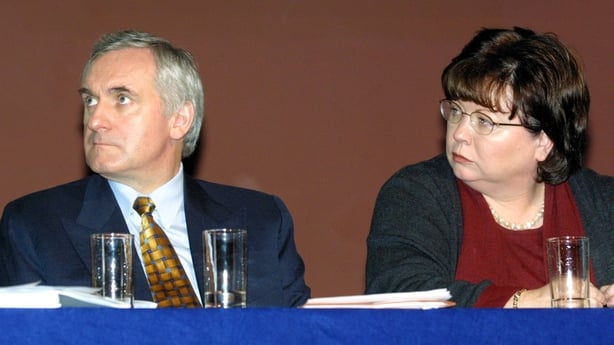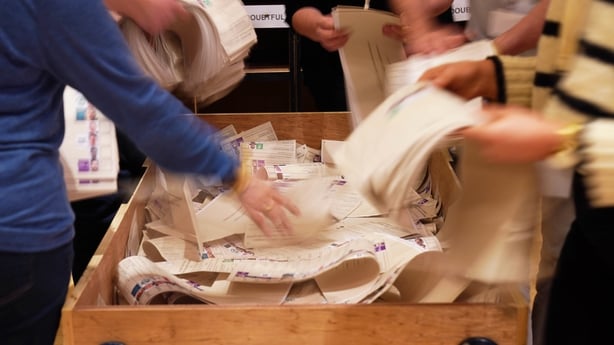Election 24 is firmly on with candidates furiously hitting the canvass trail.
The Coalition has been buoyed by Sinn Féin’s recent travails and is daring to believe that it could be back in power, in some form.
However, the three-party Government that has held together for over four years is now splintering apart with a no holds barred approach expected for the duration of the campaign.
This is already evident with Green Party leader Roderic O’Gorman stealing a march on the other parties by declaring his preference for a polling date of 29 November.
This caused serious annoyance across Fianna Fáil and especially in Fine Gael where Taoiseach Simon Harris has repeatedly emphasised that it is his constitutional prerogative to dissolve the Dáil.
But for the Green Party, the uncoupling is more straightforward.
It will appeal to its core voters on its record of climate action in Government – setting legal targets for carbon emission reductions, carbon budgets. Expect public transport measures also to be to the fore.
One of the Green key messages appears to be that voters cannot trust Fianna Fáil or Fine Gael on their own to prioritise tackling the climate emergency.
Waterford TD Marc Ó Cathasaigh posted a social media video saying, “things like biodiversity, climate change will absolutely go onto the back burner if there isn’t a Green Party participation in the next Government”.
That message is strongly reminiscent of the Progressive Democrats 2002 election poster “One Party Government? No Thanks”. This was memorably unveiled by Michael McDowell shimmying up a lamp post.
The strategy worked underlining the power of negative campaigning.
The Progressive Democrats returned eight TDs, rejoining the Fianna Fáil-led Government and Mr McDowell also regained his seat in Dublin South-East.

Of course, there is nothing surprising here and the other parties are aware that the gloves are off with one Fianna Fáil source saying of the Greens: “Of course they would say that, they are electioneering.”
For Fianna Fáil and Fine Gael, the business of stressing their party’s unique selling points is much more complicated.
Both are aware of the danger that voters will view them as the same entity following their coming together in a historic coalition in 2020.
And while this means fierce competition at constituency level between rival candidates, at the macro level there is also a bigger picture at play where they need the others’ transfers.
This was sharply illustrated in the local elections when strong transfer patterns were evident between the two old enemies.
Those transfers propelled candidates over the line with Fianna Fáil eventually taking the most seats at 248, while Fine Gael was just behind on 245.
But treading the line between undermining rivals while also appealing for a lower placed preference requires a fine balance.
Allied to that is the challenge for competing candidates of how to attract number ones when they are selling the same track record in Government.
There are several constituencies which will be dogfights for Fianna Fáil and Fine Gael.
Take the three seat Dublin North-West where sitting Fianna Fáil deputy Paul McAuliffe is threatened by the return of the former TD whose seat he took in 2020 – Noel Rock.

In 2016, Mr Rock managed to pull ahead of Mr McAuliffe even though the Fianna Fáil candidate got a 0.3% head start in first preference votes.
Other Fine Gael targets include Cork South-West, Dublin Bay South, Waterford and both Tipperary North and South. Gains here could come at the expense of Fianna Fáil.
Another curious aspect of the campaign will be both parties attempting to reassert authority in the portfolios where they don’t have senior ministers.
So, for the campaign, Paschal Donohoe will lead on housing policy for Fine Gael up against Darragh O’Brien while Jennifer Carroll MacNeill will be spokesperson for health versus Stephen Donnelly.
They will be joined by Hildegarde Naughton marking climate and transport and Neale Richmond covering the children portfolio.
Fianna Fáil already had shadow spokespeople so Jim O’Callaghan will bring forward justice policy while Paul McAuliffe will handle social protection.
But the crucial battle is over who leads the next Government.
The arithmetic of 2020 dictated that Fianna Fáil and Fine Gael were obliged to form an equal partnership with the novel element of a rotating Taoiseach.
The 12 TDs of the Green Party were added to secure a majority, but they were dwarfed in numbers by the other parties.
This time, both Fianna Fáil and Fine Gael are aiming to field between 75 and 80 candidates with tickets still being finalised.
Ideally, both would love to outpoll the other sufficiently to secure the Taoiseach’s office with the smaller entity relegated to the Tánaiste role.
Of course, this outcome is only possible if current polling trends are replicated on the day leaving Sinn Féin consigned to third place.
However, the lesson of 2020 is that voting decisions are made during the campaign itself with many only firming up their intentions in the final days.
That means it’s all to play for in the weeks ahead.
